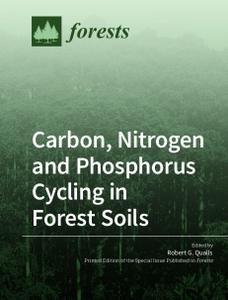Carbon, Nitrogen and Phosphorus Cycling in Forest Soils by Robert G. Qualls
English | PDF | 2019 | 240 Pages | ISBN : 3038976822 | 33.92 MB
The majority of carbon stored in the soils of the world is stored in forests. The refractory nature of some portions of forest soil organic matter also provides the slow, gradual release of organic nitrogen and phosphorus to sustain long term forest productivity. Contemporary and future disturbances, such as climatic warming, deforestation, short rotation sylviculture, the invasion of exotic species, and fire, all place strains on the integrity of this homeostatic system of C, N, and P cycling. On the other hand, the CO2 fertilization effect may partially offset losses of soil organic matter, but many have questioned the ability of N and P stocks to sustain the CO2 fertilization effect.
Despite many advances in the understanding of C, N, and P cycling in forest soils, many questions remain. For example, no complete inventory of the myriad structural formulae of soil organic N and P has ever been made. The factors that cause the resistance of soil organic matter to mineralization are still hotly debated. Is it possible to "engineer" forest soil organic matter so that it sequesters even more C? The role of microbial species diversity in forest C, N, and P cycling is poorly understood. The difficulty in measuring the contribution of roots to soil organic C, N, and P makes its contribution uncertain. Finally, global differences in climate, soils, and species make the extrapolation of any one important study difficult to extrapolate to forest soils worldwide.
Without You And Your Support We Can’t Continue
Thanks For Buying Premium From My Links For Support
Thanks For Buying Premium From My Links For Support



